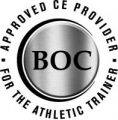Posted on Dec 14, 2012
Patients and clients will often ask me what the difference is between strain counterstrain (SCS) and Positional Release Therapy (PRT). Strain Counterstrain (SCS) is the term that Dr. Jones gave the release technique, which was based on his theory that a tissue that is strained abrubtly will counterstrain an opposing tissue. Initially, Dr. Jones termed the technique Positional Release Technique, but later coined the term SCS based on his theory of why patients had multiple tender points due to injury or trauma.
Positional Release Therapy or PRT utilizes Dr. Jone's original work and position descriptions and select technique applicaitons as a foundation, but rather than treating the release technique as an isolated therapy technique, the Positional Release Therapy Institute and Dr. Speicher treat PRT as a total body therapy. Since the origination of SCS, multiple changes have occured to the technique and its application.
At PRT-i, we utilize PRT as a total therapy approach and have developed many new techniques, treatment procedures and applications of the technique that are novel to the original SCS approach. However, we also utilize other therapy techniques in conjunction with PRT, such as massage, rehabilitation, muscle energy, mobilization.
Some distinct key differences in the use of SCS vs. PRT are the use of the Fasciculatory Response Method and Arthokinematic Joint Manipulation, which are taugt to PRT-i course participants. Additionally, PRT-i has developed treatment algorithms for specific conditions, which guide the practitioner on what treatments should be done for specific conditions.



